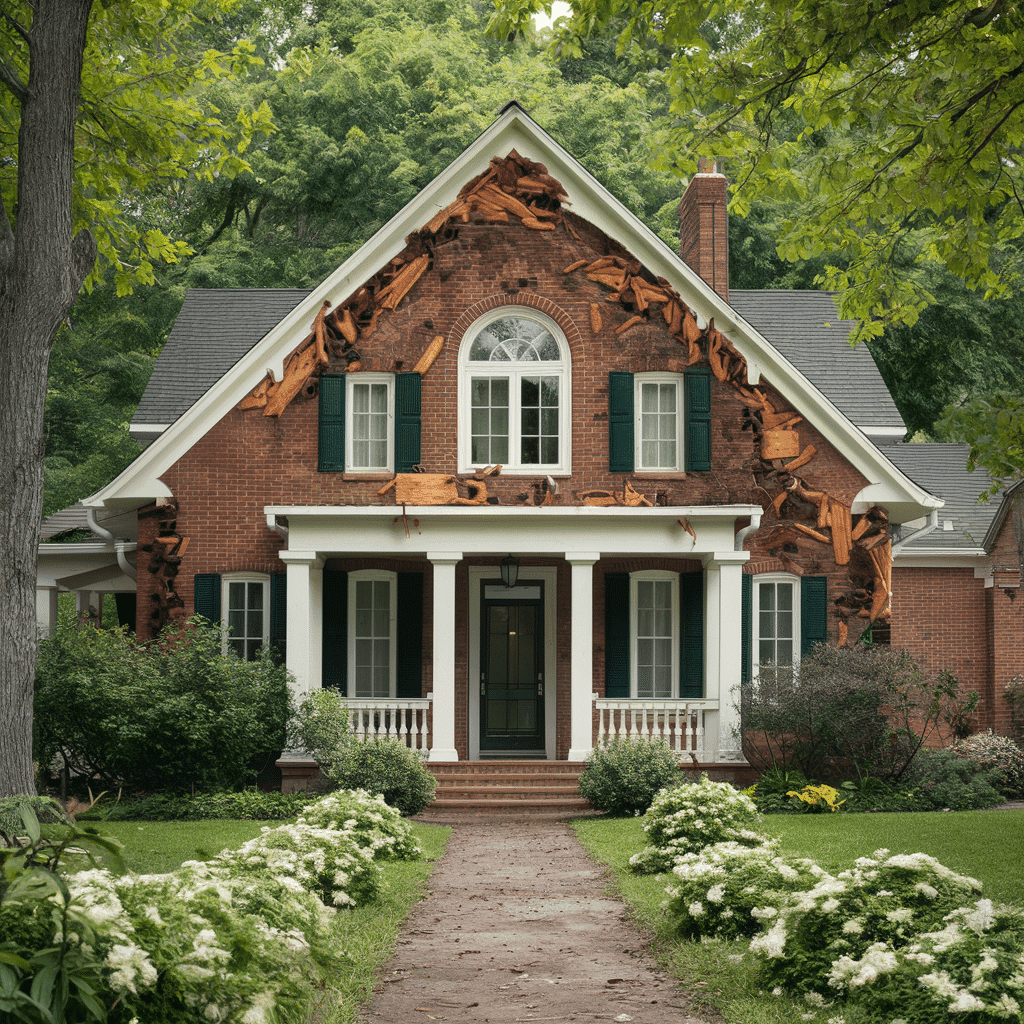Termites are a homeowner’s nightmare, silently causing extensive damage to the structural integrity of homes. If you live in Homestead, FL, understanding how termites infiltrate your property is crucial for effective prevention and treatment. At Dade Pest Solutions, we are committed to helping you protect your home from these destructive pests. Here’s a comprehensive guide on how termites get into homes in Homestead and what you can do to prevent and address infestations.
Understanding Termite Behavior
Termites are attracted to cellulose, a primary component of wood and other plant-based materials. They seek out food sources and suitable living conditions, often entering homes without any obvious signs. Understanding their behavior and entry points can help you take proactive measures to protect your home.
Common Termite Entry Points
Termites typically enter homes through several common entry points:
- Wood-to-Soil Contact: Termites often gain access to homes through wood that is in direct contact with the soil. This includes wooden structures like decks, porches, and wooden siding.
- Foundation Cracks: Even the smallest cracks in your home’s foundation can serve as entry points for termites.
- Utility Conduits: Gaps around plumbing, electrical wiring, and other utility conduits can provide access for termites.
- Cracks and Crevices: Small cracks and crevices in your home’s walls and exterior can be exploited by termites.
Types of Termites in Homestead, FL
Different types of termites have different behaviors and preferred habitats. Understanding the specific types of termites that are common in Homestead can help you identify and address infestations more effectively.
Subterranean Termites
Subterranean termites are the most common type found in Homestead. They live in the soil and build mud tubes to access wood above ground. These termites are attracted to moisture and can enter through foundation cracks as narrow as 1/32 of an inch.Common Entry Points:
- Foundation cracks
- Crawl spaces
- Gaps around pipes
Drywood Termites
Drywood termites do not require soil contact and prefer dry, undecayed wood. They can infest attics, eaves, wooden furniture, and door frames. Infestations often occur when swarmers find openings like small gaps in paint or around siding to lay eggs and establish new colonies.Habitat Preferences:
- Attics and eaves
- Wooden furniture
- Inside walls
Dampwood Termites
Dampwood termites are less common but can be found in Homestead’s humid climate. They require regular contact with a source of free water and prefer moist or damaged wood. They often infest areas where wood meets soil, wood exposed to roof leaks, and wood exposed to irrigation from rainfall or sprinklers.Habitat Preferences:
- Moist or damaged wood
- Rotting trees and tree stumps
- Houses with leaky plumbing
What Attracts Termites to a Home?
Several factors make homes more prone to termite infestations:
- Moisture: Leaky pipes, gutters, and poor drainage create an inviting environment for termites.
- Wood Piles: Firewood and other wood piles stored close to the house can serve as a bridge for termites.
- Mulch: Mulch retains moisture and can attract termites.
- Dense Vegetation: Vegetation close to the house can provide cover and moisture for termites.
- Poor Maintenance: Homes with peeling paint, unsuitable caulking, poor landscaping, dead trees, and wood in contact with the soil are more susceptible to termite attacks.
Prevention and Treatment Strategies
Preventing termites from entering your home requires a multifaceted approach, including regular inspections and decisive treatment options when necessary.
Termite Prevention Tips
Regular Inspections: Schedule regular termite inspections, especially for subterranean termites, to identify early signs of an infestation.Moisture Control: Reduce moisture in crawl spaces, basements, and around the foundation by fixing leaks and ensuring proper ventilation.Seal Cracks: Examine the foundation and exterior walls. Seal any cracks that could serve as entry points for termites.Wood-to-Ground Contact: Minimize wood-to-ground contact near the property. Keep firewood, lumber, and paper away from the foundation and crawl spaces.Termiticide Barrier: Apply a DIY termiticide barrier around the home. This can deter subterranean termites from making their way inside.These simple steps can substantially reduce the risk of termites establishing themselves in a home.
Termite Extermination Methods
Once termites infiltrate a property, homeowners can employ several methods to eliminate the infestation:Termite Bait Stations: Place termite baits strategically to eliminate the colony over time.Boric Acid: Apply boric acid on affected areas; it works as a poison for termites.Spot Treatments: Target visible termite activity or mud tubes with direct chemical treatments.Heat Treatment: For drywood termites, heat treatments can be effective in eliminating termite colonies without chemicals.Eliminating termite colonies often requires a combination of these methods to be effective.
Professional Termite Treatment
Sometimes the expertise of a professional pest control service is necessary, particularly for severe or persistent termite problems. If you notice a termite problem in your home, it’s best to contact a professional as soon as possible.Benefits of Working with a Professional:Custom Solutions: Specialists assess the property to create a unique and effective plan that may include termite baits, termiticides, and regular monitoring.Follow-Up: Ongoing support and follow-up inspections ensure termites are completely eradicated and don’t return.Experience: Selecting a reliable pest control company is crucial for thorough extermination and long-term termite prevention. Working with professionals with years of experience provides peace of mind and often guarantees on their work.
Frequently Asked Questions
When dealing with termites, homeowners often have pressing concerns regarding identification, prevention, and the peculiar ways these pests can infiltrate a home.
What are the common signs that indicate a termite presence in a home? The most common signs of termite infestation include visible mud tubes on walls, hollow-sounding wood, and discarded wings near windows or doors.
Can termites infest an apartment and, if so, how does this usually occur? Yes, termites can infest apartments by traveling through shared walls or floors, especially if there is wood in contact with soil or if there are moisture issues.
What conditions around a house tend to attract termites the most? Termites are most attracted to moist soil, wood in direct contact with the ground, and undisturbed spaces like crawl spaces or attics with ample cellulose materials.
Is it true that termites originate from the soil, and what does this mean for homeowners? True, most termites come from colonies in the soil. Homeowners need to be vigilant about soil-to-wood contact and excessive moisture near the foundation.
Are there any effective strategies to prevent a termite infestation in your residence? Effective prevention strategies include removing wood-to-soil contact, maintaining dry conditions in and around the home, and regular inspections by pest control experts.
Why might termites suddenly become noticeable in a previously unaffected home? Termites may become noticeable if a colony matures and spreads or if changes in the environment, such as construction, disrupt an existing colony causing them to seek new food sources.
Conclusion: Proactive Protection is Key
Understanding how termites enter homes in Homestead, FL, is the first step in protecting your property from these destructive pests. Regular inspections, preventive measures, and professional pest control services are essential in maintaining a termite-free home. At Dade Pest Solutions, we are committed to providing comprehensive termite control services tailored to your specific needs. Contact us today to schedule an inspection and learn more about our effective termite prevention and treatment options. Let us help you safeguard your home against termites, ensuring peace of mind and preserving your property’s value for years to come.

